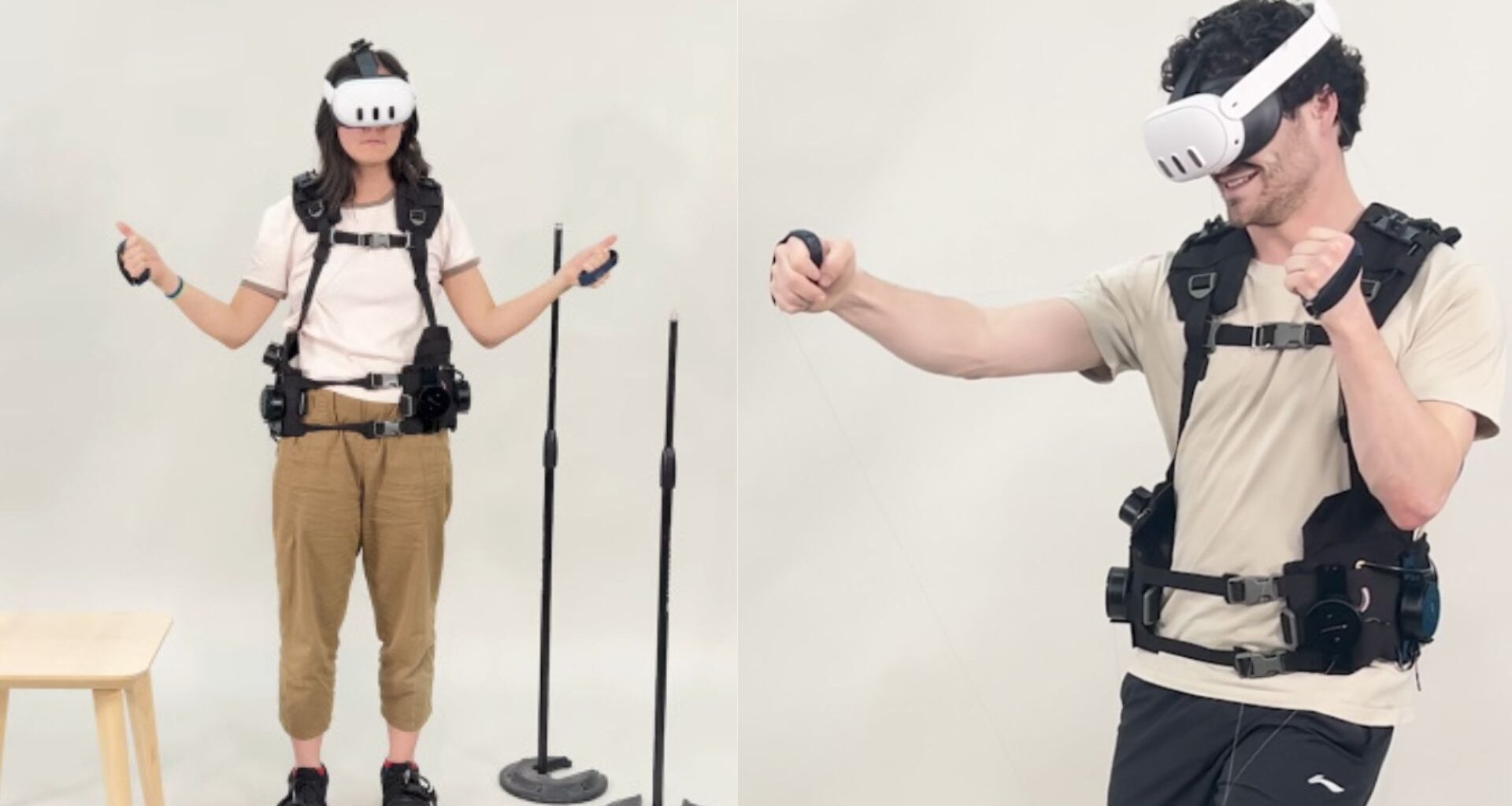Exoskeleton suits have long carried a reputation for being bulky, heavy, and prohibitively expensive. For years, full-body systems capable of lifting loads or delivering lifelike VR sensations came with six-figure price tags.
A team of researchers is now challenging that model with Kinethreads, a lightweight exosuit built from off-the-shelf components and creative fabric engineering. At less than $500, it makes muscle-assisting and haptic technology far more accessible.
Thread-powered movement support
Kinethreads wraps around the chest, arms, and legs like a second skin. Nylon threads run through fabric channels, connected to compact motors that act as synthetic tendons.
When activated, the threads tighten and contract, pulling on underlying muscles to guide movement. A Raspberry Pi coordinates the system through simple Python scripts.
The first prototypes focused on arms. A sleeve covered the bicep and forearm, with threads running from shoulder to wrist. Four motors controlled each arm: one for shoulder flexion, one for the elbow, and two for rotation and extension.
Designers used elastic neoprene for comfort and rigid plastic guides to keep threads in place. Tension was adjusted via sliders on a laptop connected to the system.
The design expanded to legs, which demanded broader support.
Wider bands around thighs and calves distributed pressure evenly and reduced hotspots. Motors shifted to a belt pack for mobility, with a lithium-polymer battery supplying two hours of active use.
This setup allowed wearers to walk freely while receiving stabilization at the hips and knees, a valuable aid for rehabilitation.
Vibration motors placed along the threads added another layer of feedback.
They buzzed as muscles contracted, helping the brain anticipate available assistance. Over time, wearers depended less on these cues as their natural control improved.
Affordable haptics for VR
Virtual reality hardware has become affordable, but realistic physical feedback remains locked behind expensive systems.
Most consumer headsets rely only on vibration, which quickly breaks immersion when users attempt to interact with virtual objects. Kinethreads addresses that problem with a simple, low-cost approach.
The suit weighs under five kilograms and can be put on in less than 30 seconds. Despite its small footprint, it delivers up to 120 newtons of force and vibrotactile feedback at up to 200 hertz.
That range allows users to feel forces as subtle as resistance from a lightweight object or as strong as the jolt of an explosion.
Ten motorized reels mounted on a lightweight vest generate the forces. Eight are arranged around the waist, while two more provide directional pull to the torso, limbs, and even the head. By reeling in or releasing strings, the system creates tension that the body interprets as weight, resistance, or acceleration.
Researchers designed the suit with modularity in mind. Two motor sizes balance torque with cost and weight, while encoders ensure precise tracking.
Custom PCBs, microcontrollers, and a Unity-based software stack enable real-time coordination between movement and feedback.
Testing showed Kinethreads could simulate a wide range of scenarios, from lifting virtual objects to bracing against sudden impacts.
Participants found the suit light, comfortable, and surprisingly easy to wear for extended sessions.
Kinethreads demonstrates that high-quality haptics no longer need to be locked behind expensive, rigid exoskeletons.
With smart engineering and consumer-grade materials, immersive VR and rehabilitation support can finally reach a much wider audience.
To explore the full design, user studies, and results, check out the original research paper.

